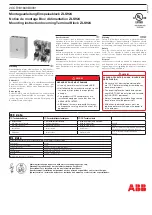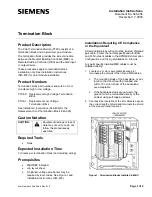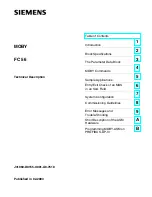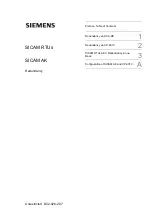
Error handling and diagnostics
EL6751
173
Version: 3.5
Error
Description
0x210A
Insufficient memory at node boot-up
0x210B
Insufficient memory at node boot-up
0x210C
Insufficient memory at node boot-up
0x210D
Insufficient memory at node boot-up
0x210E
Insufficient memory at node boot-up
0x210F
Insufficient memory at node boot-up
0x2110
Insufficient memory at node boot-up
0x2111
Insufficient memory at node boot-up
0x2112
Insufficient memory at node boot-up
0x2113
Insufficient memory at node boot-up
0x2114
Insufficient memory at node boot-up
0x2301
Insufficient memory for low-priority queues
0x2302
Insufficient memory for low-priority queues
6.6
CANopen Trouble Shooting
Error Frames
One sign of errors in the CAN wiring, the address assignment or the setting of the baud rate is an increased
number of error frames: the diagnostic LEDs then show
Warning Limit exceeded
or
Bus-off state entered
.
Error Frames
Warning limit exceeded, passive error or bus-off state are indicated first of all at those nodes that
have detected the most errors. These nodes are not necessarily the cause for the occurrence of er-
ror frames!
If, for instance, one node contributes unusually heavily to the bus traffic (e.g. because it is the only
one with analog inputs, the data for which triggers event-driven PDOs at a high rate), then the prob-
ability of its telegrams being damaged increases. Its error counter will, correspondingly, be the first
to reach a critical level.
Node ID / Setting the Baud Rate
Care must be taken to ensure that node addresses are not assigned twice: there may only be one sender for
each CAN data telegram.
Test 1
Check node addresses. If the CAN communication functions at least some of the time, and if all the devices
support the boot up message, then the address assignment can also be examined by recording the boot up
messages after the devices are switched on. This will not, however, recognize node addresses that have
been swapped.
Test 2
Check that the same baud rate has been set everywhere. For special devices, if the bit timing parameters
are accessible, do they agree with the CANopen definitions (sampling time, SJW, oscillator).
Testing the CAN wiring
These tests should not be carried out if the network is active: No communication should take place during
the tests. The following tests should be carried out in the stated sequence, because some of the tests
assume that the previous test was successful. Not all the tests are generally necessary.
















































